This Is How To Grow Sundews According To Experts Megan Webb And Nigel Hewitt-Cooper
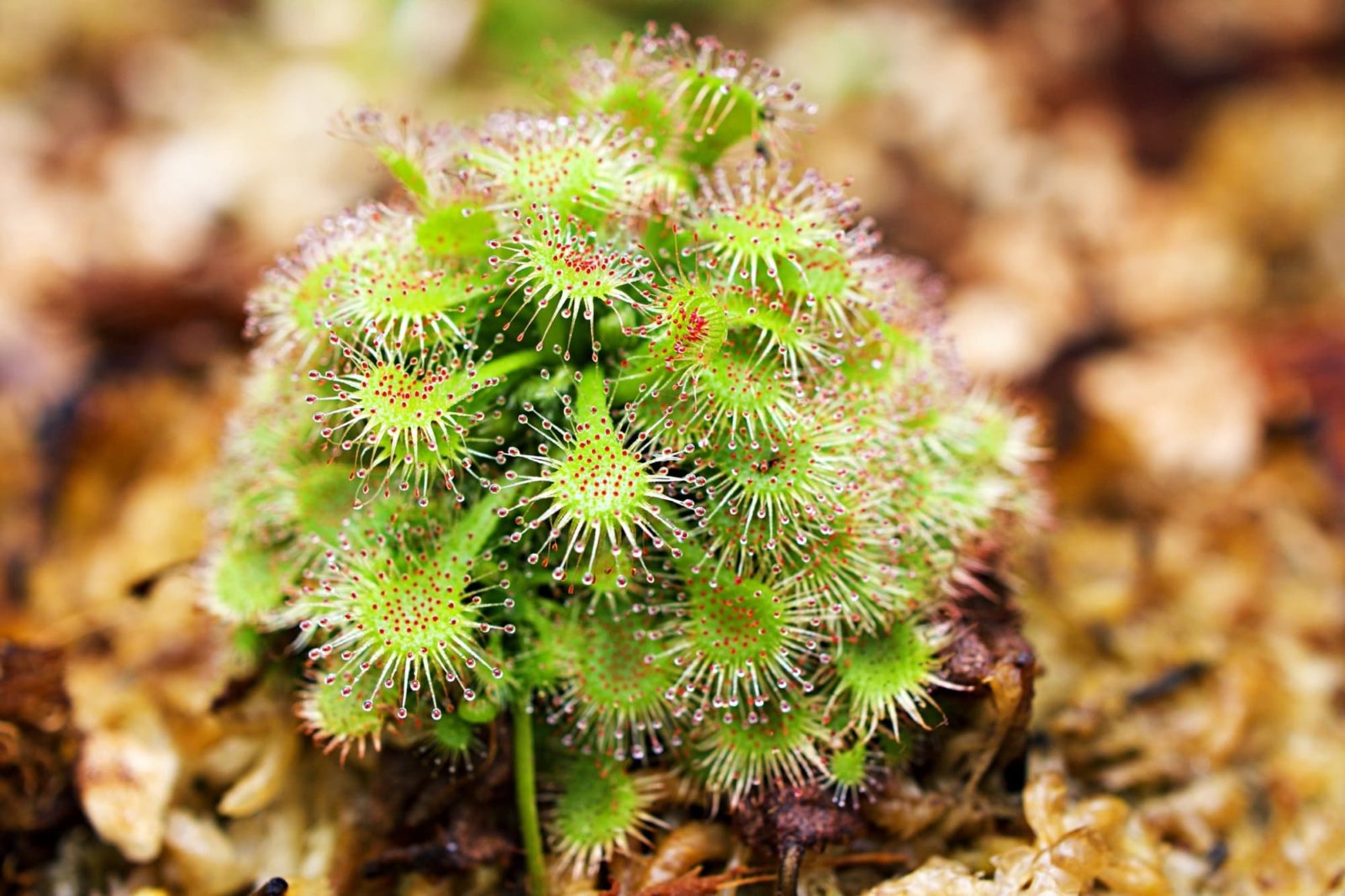
CARNIVOROUS > DROSERA

Elizabeth is a Permaculture Garden Designer, Sustainability Consultant and Professional Writer, working as an advocate for positive change. She graduated from the University of St. Andrews with an MA in English and Philosophy and obtained a Diploma in Applied Permaculture Design from the Permaculture Association.
Reviewed By DAN ORI

Dan has over 27 years’ under his belt caring for plants and gardens. Working as a Horticultural Instructor and Consultant, he draws on a diverse range of experience that includes working as a Head Gardener, Tree Surgeon, Garden Centre Trouble Shooter, and writer of academic papers. Dan has a Level 3 Diploma in Horticulture and is currently a candidate for the RHS’s most prestigious award – The Master of Horticulture.
Contributions From NIGEL HEWITT-COOPER

Nigel is the Owner of Hewitt-Cooper Carnivorous Plants, a specialist nursery that is based in Somerset. Nigel has been growing carnivorous plants for over 40 years and has won 10(!) Gold Medals at the Chelsea Flower Show. He is also the author of a book on their cultivation.

Megan Webb has been growing carnivorous plants for more than 10 years; within that time she has collected a huge number of carnivorous plant genera and species. Megan has a BSc (Hons) in Horticulture from Writtle University College and is the winner of both the Aberconwy Award and the Alan Martin Award.
DROSERA GUIDES
If you are interested in growing carnivorous plants, then Droseras should be among the plants on your hit list.
This large group of insectivorous plants offer options that are very easy for beginners to grow as houseplants in their homes, as well as numerous more challenging options for those with some carnivorous plant experience.
“Having grown many more of the species over the years than most, I have settled on the sundews as one of my favourite carnivorous plants to grow,” shares Nigel Hewitt-Cooper, Owner of the specialist plant nursery Hewitt-Cooper Carnivorous Plants.
“The Droseras number over 300 species and demonstrate the most incredible environmental adaptations.
“Because of this, they require a diverse selection of cultural conditions which have kept me on my toes all these years.”
Overview
| Botanical Name | Drosera |
| Common Name(s) | Sundews |
| Plant Type | Perennial carnivorous plant |
| Native Area | Broad distribution globally |
| Hardiness Rating | Varies |
| Foliage | Upright herbaceous plants forming tentacled rosettes |
| Flowers | Mostly small flowers held high in spikes above the leaves |
| When To Plant | Anytime indoors |
Sunlight
Preferred
Bright, indirect sunlight
Exposure
Sheltered
Size
Height
0.1 – 0.5M
Spread
0.1 – 0.5M
Bloom Time
Summer
Soil
Preferred
Carnivorous plant potting mix or clay
Moisture
Poorly-drained
pH
Acidic
Droseras, which are commonly called sundews, are found with a wide global distribution, with species found in diverse locations from Alaska to New Zealand.1Sundews (Drosera). (2019, December 3). Carnivorous Plant Resource. Retrieved May 4, 2023, from https://carnivorousplantresource.com/the-plants/sundews/
There are some in temperate regions, in Eurasia and North America, though most species are found in warmer climes.
Only three species are native to Europe.2Drosera L. (n.d.). Global Biodiversity Information Facility. Retrieved May 4, 2023, from https://www.gbif.org/species/144103463

Sundews generally tend to grow in moist or consistently wet habitats with high levels of sunlight and acidic soils.
Looking at where they naturally grow can give us clues about the conditions they need when we grow them as houseplants in our homes.
In general, they like warmer climes and are only moderately frost-resistant.
However, sundews are remarkable plants that have adapted to a wide variety of different environments.
Popular Varieties
“Like all horticultural groups, there are species that require a good degree of experience to succeed with, so it’s best to concentrate on the more commonly grown plants which are easier to grow,” shares Nigel.
“The sundew species is one of the easier carnivorous plant species to grow.”
The hardiest and least fussy of sundews tend to be those that are easiest to grow at home and these are also, conveniently, the most widely available.
Some of the drosera varieties that you might think about growing in the UK are:
D. aliciae
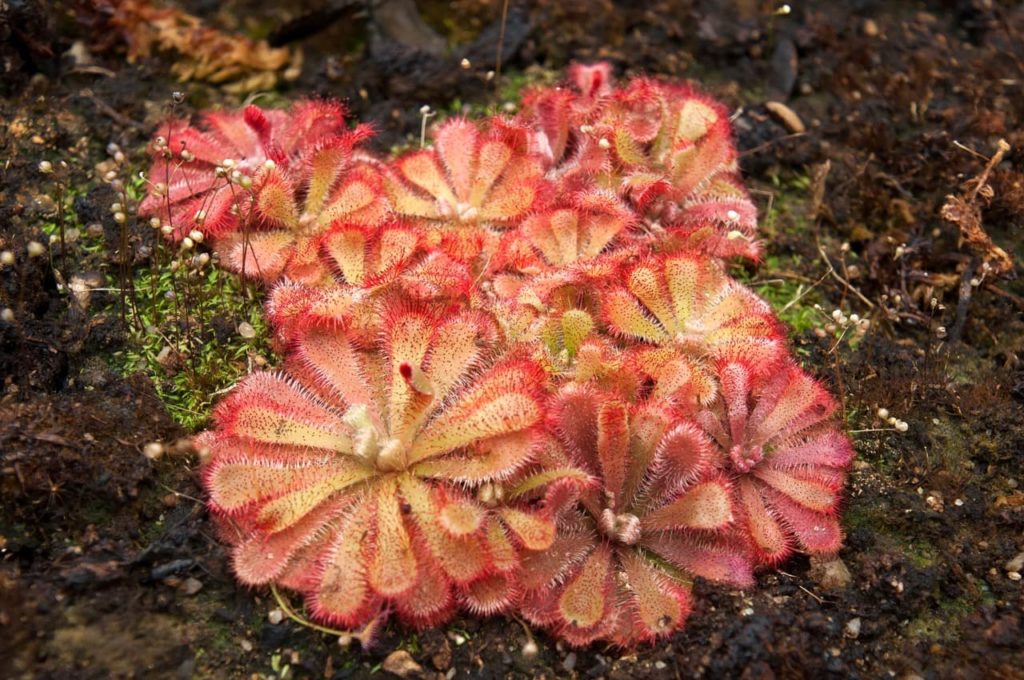
D. anglica
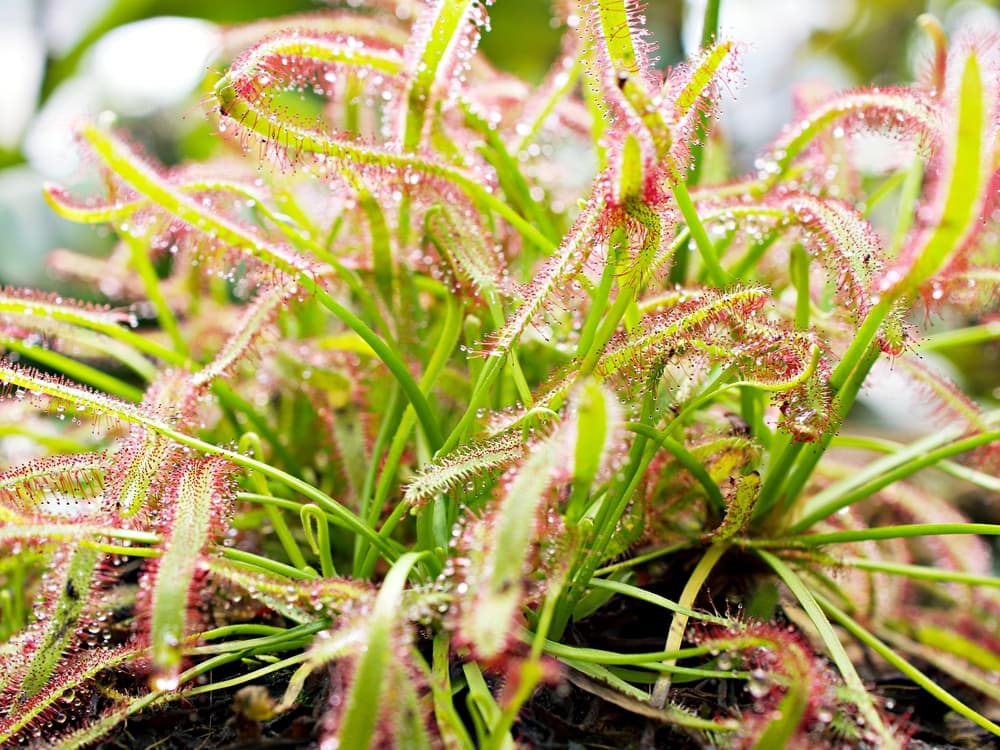
D. binata var. dichotoma

D. capensis

D. intermedia

D. rotundifolia

There are also other species, varieties and hybrids to explore if you become interested in growing these plants.
How To Grow Drosera
Different Drosera can have significantly different growing needs.
Some sundews are remarkably easy and straightforward to grow, while others can be much more finicky and challenging.
If you are looking for an easier option for beginners then the cape sundew, Latin name Drosera capensis, is considered to be the easiest carnivorous plant to cultivate.

This Drosera can be grown as a houseplant and is native to the cape of South Africa.3McQuillan, M. (2008, February). Drosera capensis | PlantZAfrica. South African National Biodiversity Institute. Retrieved May 4, 2023, from http://pza.sanbi.org/drosera-capensis
It is far less well-known than the Venus fly trap, but actually easier to grow.
Growing From Seed
Drosera seeds can be sown as soon as they are ripe.
However, for the beginner, purchasing a pot-grown plant is by far the easiest option.
Drosera are sometimes also propagated through the division of clumps after the plant has flowered, through leaf cuttings taken any time during the growing season or through root cuttings taken over the winter months during the dormant period.
Drosera Plant Care
Whichever Drosera you are growing, it is important to understand its environmental needs in order to work out where to place it and how to care for it.
While most sundews are grown as houseplants, a few hardier temperate climate types can be grown outdoors in a suitable spot, usually in pond margins or a bog garden.
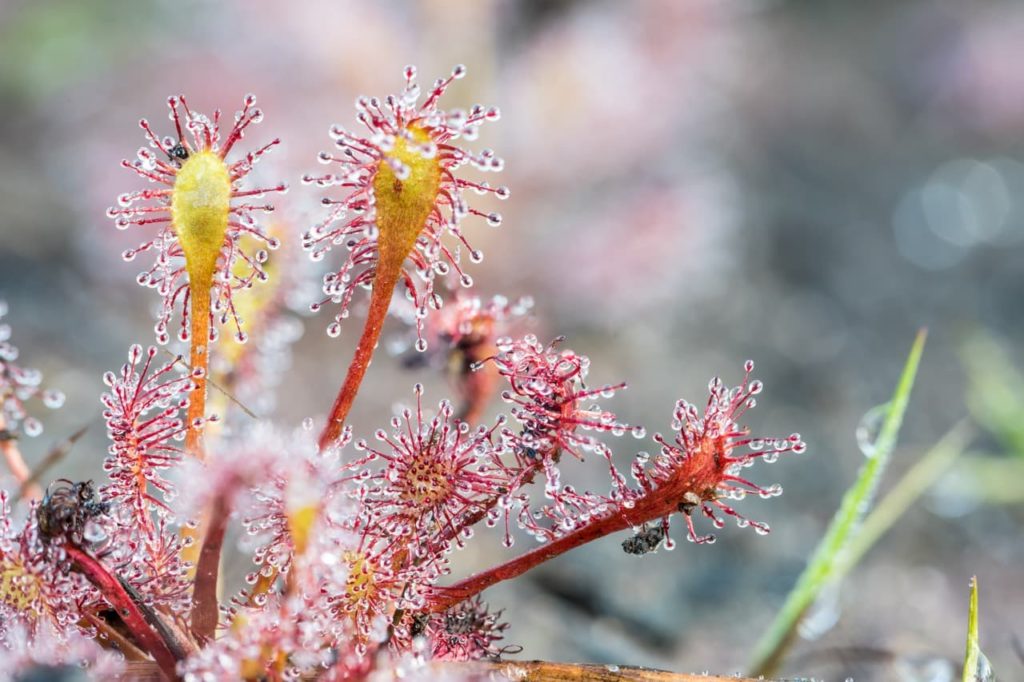
For example, Drosera rotundifolia might be grown in a bog garden outdoors, as it is H5 hardy, or also as a houseplant or in a greenhouse.
Though Drosera can differ somewhat in their needs, most of those commonly grown as houseplants do have similar needs and are cared for in similar ways.
Light & Temperature
Most Drossera that are hardy enough to be grown in a bog garden outdoors like to be in full sun or partial shade, as Nigel explains:
“Most common species of CP are inhabitants of open bog land, and are therefore adapted to high light levels.
“You can think of them as cacti with wet feet.”

Indoors, sundews should generally be placed in a light and relatively bright location, but not in direct sunlight where they may be scorched by the hot sun in summer.
When it comes to temperatures, it is important to remember that many species need heat, while others are a lot more tolerant of the cold.
So, when working out how warm they will like it, it is important to think about the hardiness rating of the specific sundew in question.
“For Drosera that needs heat to survive, it is important to remember that your windowsill can be several degrees colder than the room at night, so this may not be the best spot, particularly if it gets direct sunlight,” shares Master Horticulturist Dan Ori.
Watering
Drosera typically needs to be kept in a consistently moist soil or potting mix year-round.
It is important to make sure that moisture levels in the soil or growing medium are maintained at all times, especially during the summer months.
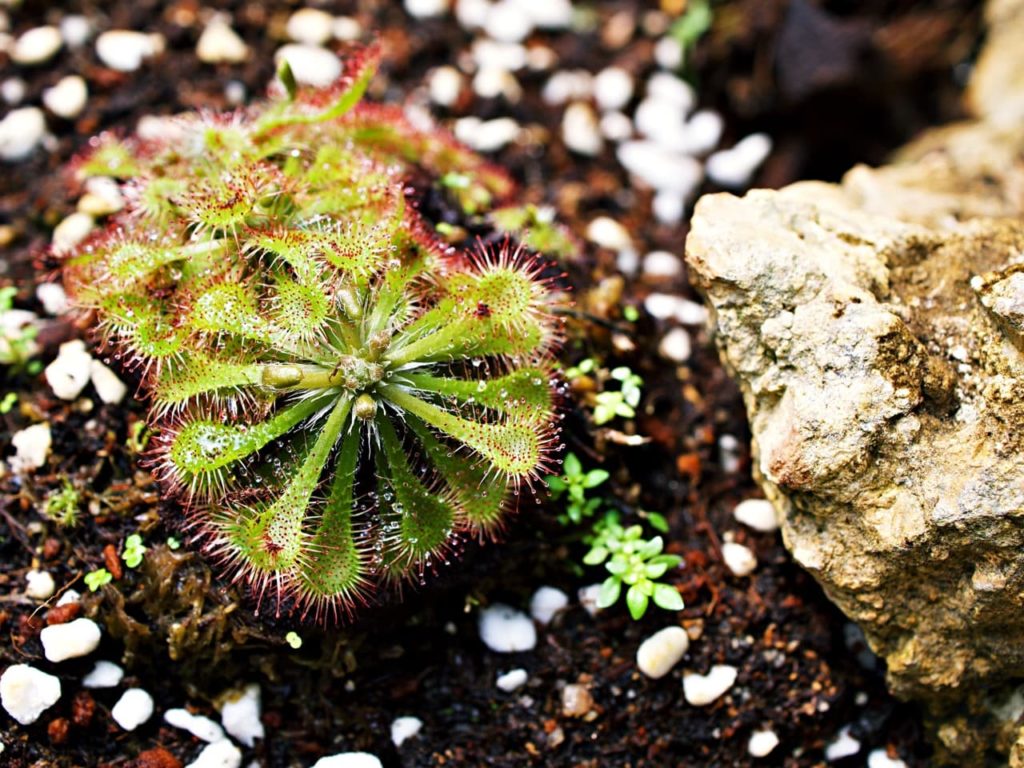
When growing Drosera, always water with rainwater where possible and avoid using tap water where possible.
It is best to water from below by standing pots in a tray of water during the growing season.
In winter, when the plants enter a period of dormancy, the medium should be kept just moist and the plants should not be stood in a tray of water as they are when in active growth.
“My top tip for success with Drosera is to concentrate on getting the watering right,” says Dan.
“Keep moist but not waterlogged, water from underneath when possible and keep the soil pH in the acid range water with rainwater, as it is naturally acidic.”
Soil Requirements
Most Droseras need a moist to consistently wet soil or growing medium, which has an acidic pH.
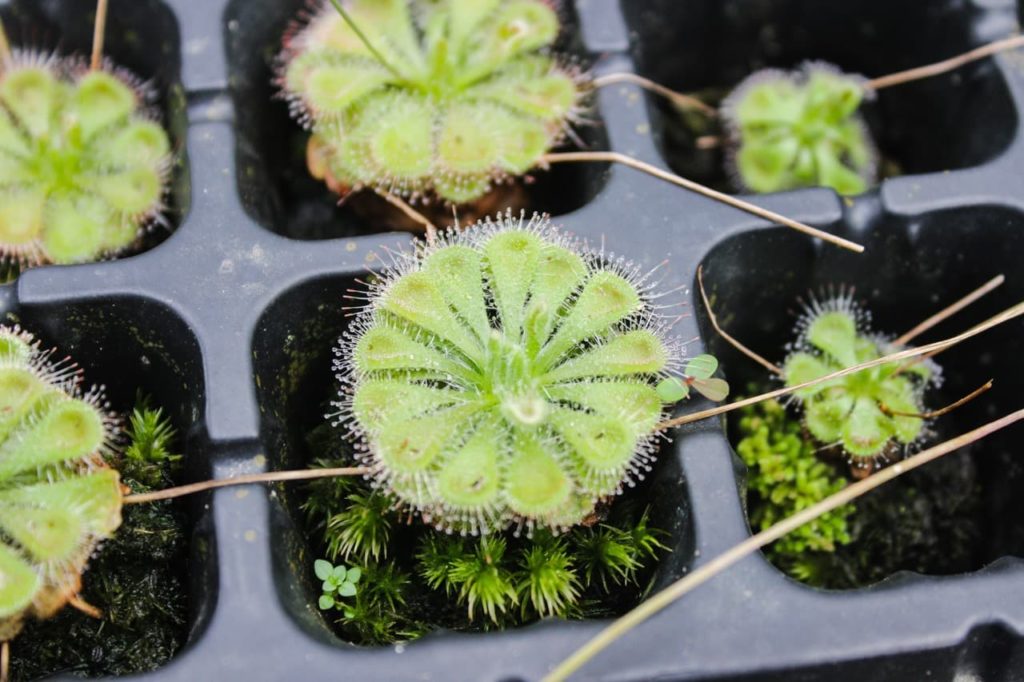
Though the needs of different species and cultivars can vary, remember that sundews typically come from marshy, wetland environments, so we are aiming to mimic those natural environments when growing these plants at home.
Feeding
You will typically not have to worry about feeding Drossera as they will typically feed themselves with small insects, trapping them on their own.
Overwintering
Many Drossera will require an indoor, frost-free location over the winter months, but some are hardy enough to remain outside in a bog garden.
Sundews will typically enter a period of dormancy over the winter months, requiring less water than during the active growth period.

“Sundews will typically require a cold winter,” says Nigel.
“This may seem rather odd, as most people assume these plants are all inhabitants of tropical regions.
“However, these are temperate plants that enjoy warm-hot summers and cold winters when they die back and enter a period of dormancy from around October ot February.”
Common Problems
Generally, Drosera is free from pest and disease problems, so any problems that do arise tend to be due to improper placement or care.
Propagation
Sundews can be propagated through division.
Clumps can be divided after the plant has flowered in the summer and the divided sections can be repotted to become new independent plants.
References
- 1Sundews (Drosera). (2019, December 3). Carnivorous Plant Resource. Retrieved May 4, 2023, from https://carnivorousplantresource.com/the-plants/sundews/
- 2Drosera L. (n.d.). Global Biodiversity Information Facility. Retrieved May 4, 2023, from https://www.gbif.org/species/144103463
- 3McQuillan, M. (2008, February). Drosera capensis | PlantZAfrica. South African National Biodiversity Institute. Retrieved May 4, 2023, from http://pza.sanbi.org/drosera-capensis
